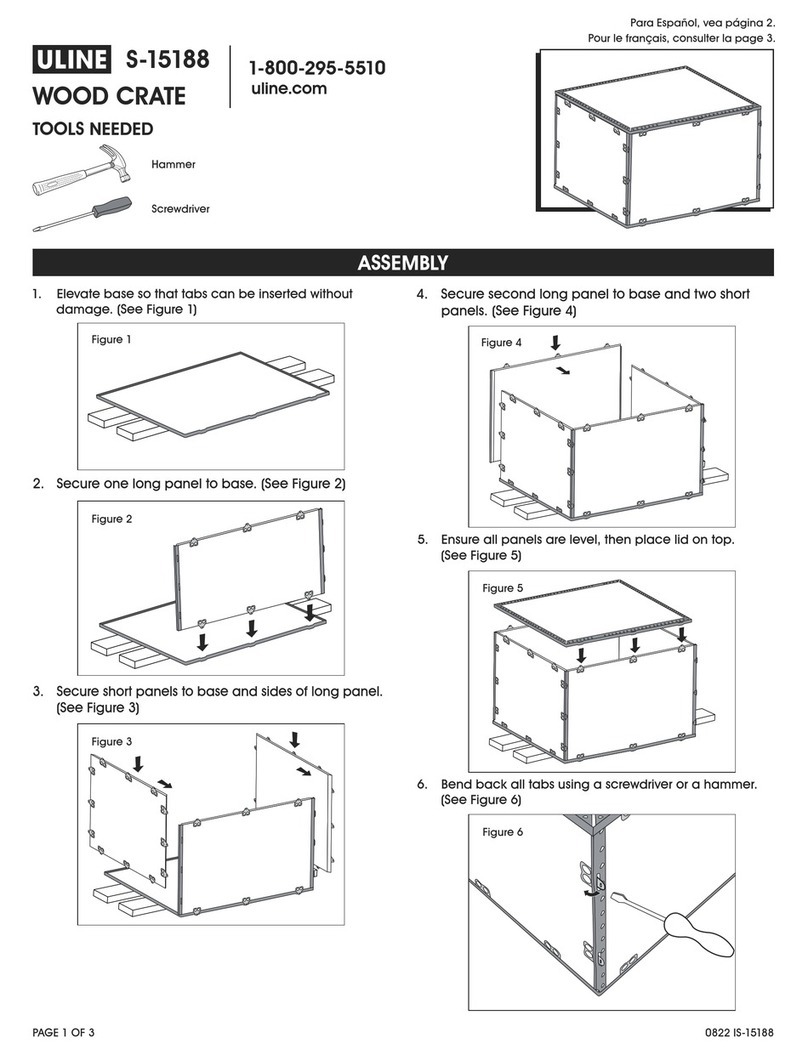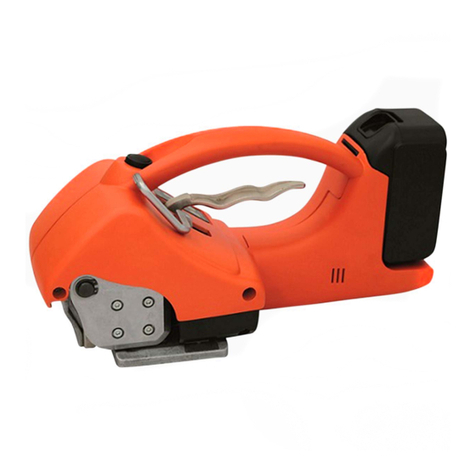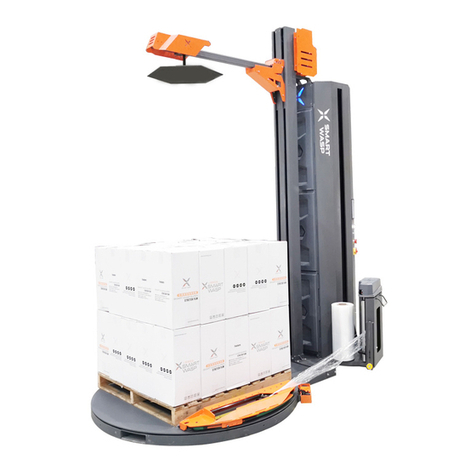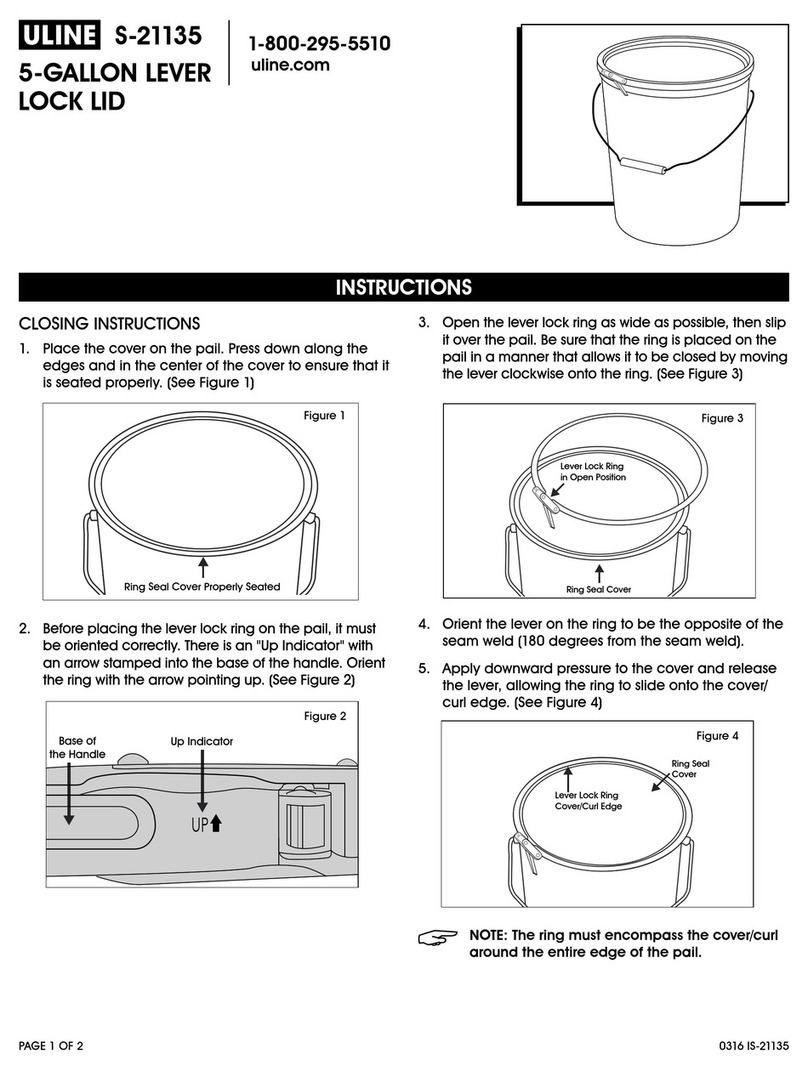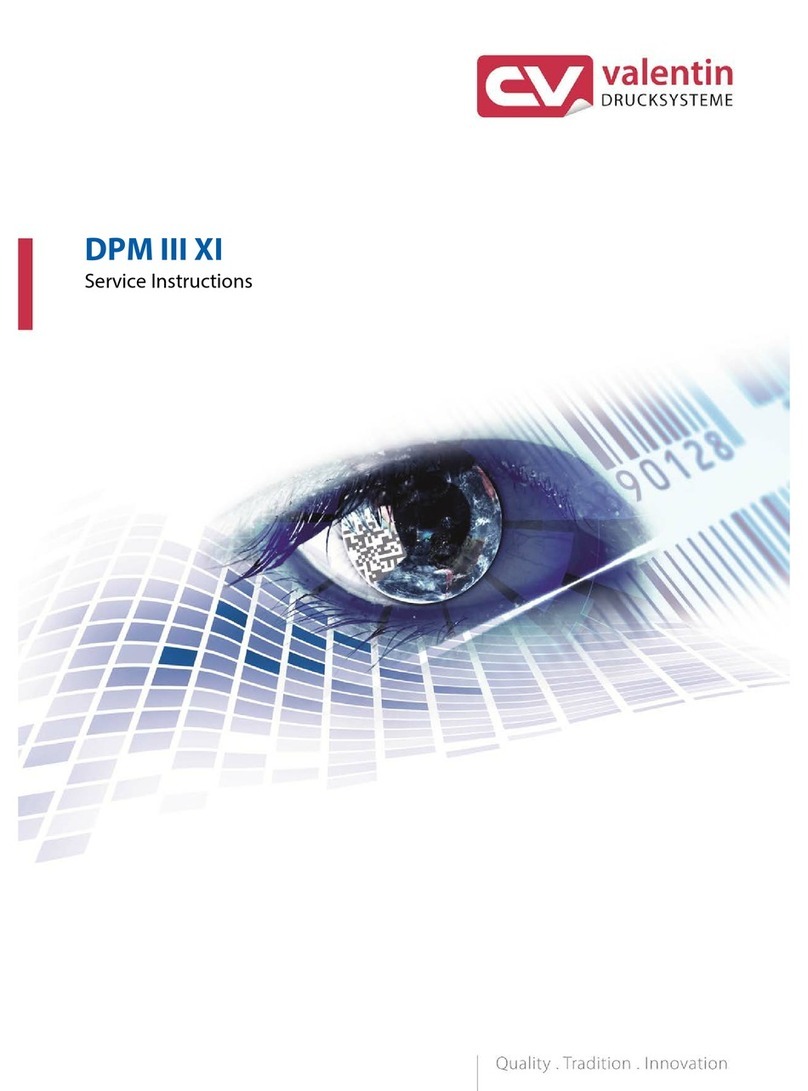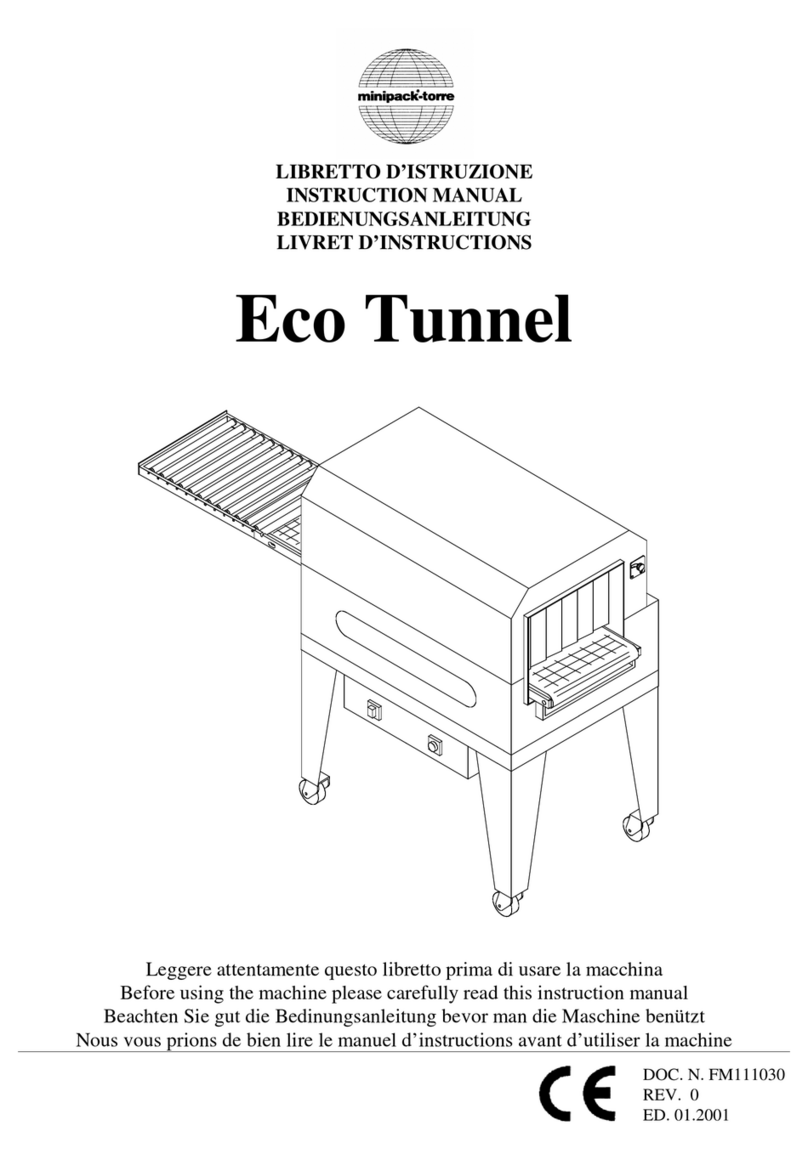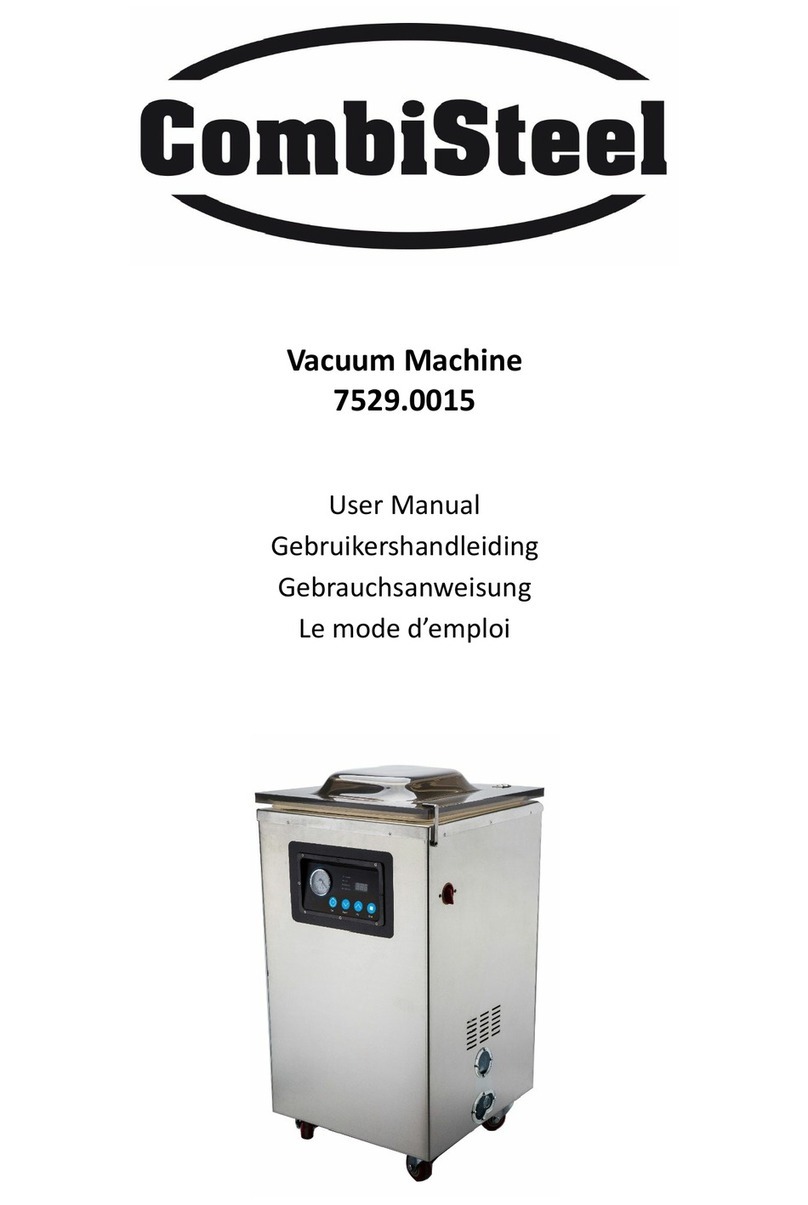ENOTECNICA PILLAN CORKER-M User manual

CORKING MACHINE
CORKER-M
ENGLISH TRANSLATION OF THE
INSTRUCTION MANUAL
AND SPARE PARTS

Corking Machine CORKER-M
2
INDEX
0. THE NAMEPLATE ON THE MACHINE.................................................................................3
0. COMPLIANCE WITH COMMUNITY REGULATIONS...........................................................3
1. INTRODUCTION...................................................................................................................4
1.1 MANUAL.......................................................................................................................................4
1.2 MANUFACTURER'S DATA ...............................................................................................................4
1.3 TECHNICAL SUPPORT....................................................................................................................4
1.4 LIABILITY......................................................................................................................................4
1.5 WARRANTY ..................................................................................................................................4
1.6 TRANSPORTATION ........................................................................................................................5
1.7 UNLOADING AND POSITIONING .......................................................................................................5
2. DESCRIPTION OF THE MACHINE ......................................................................................5
2.1 TECHNICAL DETAILS......................................................................................................................6
3. SAFETY REGULATIONS......................................................................................................6
3.1 GENERAL INFORMATION ................................................................................................................6
3.2 CONTROLS AND CONNECTION........................................................................................................7
3.3 SAFETY IN USE AND MAINTENANCE ................................................................................................7
3.4 SAFETY SYMBOL...........................................................................................................................7
4. OPERATING DIRECTIONS ..................................................................................................8
4.1 INSTRUCTIONS FOR USE ...............................................................................................................9
5. FAULTS AND REMEDIES CHECK LIST ............................................................................11
6. MAINTENANCE ..................................................................................................................13
7. COMPONENTS OF THE CORKER-M ................................................................................14
7.1 SPARE PARTS.............................................................................................................................14
7.2 ELECTRIC SYSTEM......................................................................................................................17
8. DISPOSAL AND DEMOLITION...........................................................................................18
8.1 WASTE DISPOSAL .......................................................................................................................18
8.2 MACHINE DEMOLITION.................................................................................................................18
9. GENERAL CONDITION OF SALE ......................................................................................18

Corking Machine CORKER-M
3
0. THE NAMEPLATE ON THE MACHINE
CE PLATE
IMPORTANT: THIS MANUAL IS THE PROPERTY OF THE MANUFACTURER.
ANY REPRODUCTION, EVEN PARTIAL, IS PROHIBITED.
DOCUMENT TYPE: INSTRUCTION MANUAL AND SPARE PARTS.
MACHINE TYPE: CORKING MACHINE “CORKER-M”
0. COMPLIANCE WITH COMMUNITY REGULATIONS
REFERENCE
TITLE
Directive no.
2006/42/EC
Known as the "Machinery Directive"
Directive no.
2006/95/EC
Relating to Low Voltage Directive (LVD)
Directive no.
2004/108/EC
Relating to Electromagnetic Compatibility (EMC)

Corking Machine CORKER-M
4
1. INTRODUCTION
1.1 MANUAL
The manual is considered an integral part of the machine and as such:
It must be preserved intact (in all its parts);
It must accompany the machine until demolition (even in case of movements, sale, rental, etc.).
1.2 MANUFACTURER'S DATA
Manufacturer: ENOTECNICA PILLAN srl
Via Chiesa R. 4/6, Loc. Rampazzo
36043 Camisano Vic. (VI)
Tel.: +39 0444-719004
Fax: +39 0444-719044
e-mail: info@enotecnicapillan.it
Website: www.enotecnicapillan.it
1.3 TECHNICAL SUPPORT
The technical support service is available to customers for:
Clarifications and information;
Interventions at the customer's premises, through the sending of specialist personnel with the
charging for transportation and labour expenses;
The sending of spare parts.
ATTENTION It should be remembered that:
The customer must always buy spare parts that are original or authorised by the manufacturer.
The use of non-original parts and/or defective or incorrect installation exempt the manufacturer
from all liability.
1.4 LIABILITY
The manufacturer declines all liability in case our manual is not carefully complied with or in the
event of improper use of the machine. Before carrying out any operation, read the manual or
contact the manufacturer or authorised dealer.
1.5 WARRANTY
The company ENOTECNICA PILLAN SRL ensures that the machine has been built in compliance with
current regulation.
The product warranty is 12 months from delivery.
The manufacturer guarantees only the replacement or repair of damage parts at its headquarters. Any
shipping costs and labor are at the buyer’s charge.

Corking Machine CORKER-M
5
The warranty excludes all the parties which by their nature are subject to wear.
The warranty is void for errors due to incorrect electrical connection, the lack of adequate protection,
incorrect action, improper use, use of non-original parts, disassembled component, repaired and/or
altered by persons not authorized by the company manufacturer.
1.6 TRANSPORTATION
The machine is shipped assembled, packed and secured on pallets (unless otherwise agreed with the
customer).
Upon delivery the customer must check the integrity of the packaging of the machine, ensuring that
it has not been damaged during transportation. If any damage is discovered, this must be
communicated to the carrier and the manufacturer or the independent reseller must be warned
immediately.
1.7 UNLOADING AND POSITIONING
ATTENTION: unloading must take place with means suitable for the size and the weight of the
machine.
Perform unloading via a forklift truck, being careful not to damage protruding parts of the machine and
apply the grip points in such a way that the weight is balanced.
Unloading must be carried out by qualified staff and ensuring there are no children or other
persons within the perimeter of movement of the suspended loads.
2. DESCRIPTION OF THE MACHINE
Our CORKER-M corking machine meets the requirements of those wine-growers who need a rapid
and precise corking.
Our CORKER-M corking machine is almost entirely made of stainless steel to make cleaning easier.
Moreover all those parts which could come into contact with the corks are made of materials that do
not react with the air (such as stainless steel, plexiglass, chromium-plated steel), in order to prevent all
chances of polluting corks with rust splinters or whatever other substances bad for health. Even the
internal mechanisms, such as connecting rods and levers, are galvanized. All the parts which come
into contact with the bottle are made either of rubber or pvc to avoid the breaking off of splinters from
the glass.
All moving gears are protected by safety guards and those parts which the operator must reach often,
such as the cork container and the jaws, are fitted up with easily removable safety guards. The latter
are equipped with a sensor so that the corking machine cannot work when these guards are removed.

Corking Machine CORKER-M
6
2.1 TECHNICAL DETAILS
Standard equipment:
- cork size diameter 22-26 x 50 mm.
- bottle height up to 390 mm.
- corking time approximately 1,8 seconds
Optional equipment:
- cork descent duct and cork pusher for corks with diameter up to 28 mm.
- stainless steel base BTM
CORKER-M dimensions
Height: 1210 mm.
Width: 430 mm.
Length: 560 mm.
Weight: 96 kg.
CORKER-M equipped with base BTM dimensions
Height: 1810 mm.
Width: 520 mm.
Length: 560 mm.
Weight: 115 kg.
Motor
Feeding: See machine’ s data sheet
Speed rotation: 1380 r.p.m.
Power: 0,75 Kw
Screw reducer without end: reduction ratio 1/40
N.B. The data in the tables is not binding. The manufacturer reserves the right to make changes without duty of notification.
3. SAFETY REGULATIONS
3.1 GENERAL INFORMATION
The aim of the following chapter is to inform operators of possible risks and safety regulations to keep
in mind when using the machine. However, such regulations must be respected in any working
environment.
Responsibility of the operator
Each operator must look after their own health and safety and that of other people present at work.
In particular, operators must:
use the machine correctly following the instructions in the user’s manual;
not remove or modify the safety or signalling devices;
not execute on their own initiative operations not within their competence;
wear clothing and any personal safety devices that comply with existing norms at the work
place.

Corking Machine CORKER-M
7
3.2 CONTROLS AND CONNECTION
Always check, before each use, the integrity of the electrical cables and in case of injury or
abrasion, replace the cables.
Do not route electrical cables below machines or tools that could damage their integrity.
Do not place the power cable on wet or muddy surfaces.
Switches and plugs must be protected from moisture.
Always check, before connecting any equipment, that the mains voltage is the same as that
indicated on the nameplates of the machines.
The system of the residence or of the winery must be equipped with a differential circuit breaker
and a magneto-thermal switch in order to ensure, in the event of failure, the safety of persons.
Keep children and unauthorised persons away from the electrical equipment.
Check always that the direction of rotation of the machine is correct.
3.3 SAFETY IN USE AND MAINTENANCE
Do not perform operations or interventions that are not covered in the manual.
Before starting up the machine, check the correct positioning and operation of the safety
mechanisms and of the safety devices.
During operation, ensure that anyone that is not authorised to use the machine, remains at an
appropriate distance.
Do not remove any safety mechanism without having removed the power supply.
In case of machine faults contact the manufacturer.
3.4 SAFETY SYMBOL
General danger
Caution: refer to the
operator's handbook
Caution: electric voltage
Caution: rotating gears.
Severing of fingers

Corking Machine CORKER-M
8
4. OPERATING DIRECTIONS
Our CORKER-M corking machine is provided with an upper cork container which is fitted up with a
mechanical mixing device that lines the corks up and pushes them through the descent duct for the
corking to be carried out successfully. This corking machine positions the cork within jaws which
squeeze it down to the size of the neck of the bottle. In this way less stress is needed to push the cork
down into the neck of the bottle with the advantage of not damaging the cork itself that will expand
once it is inserted and ensure a good seal.
To start the corking machine a bottle must be placed on the bottle platform, the two starting push-
buttons located on the sides of the machine must be kept pressed simultaneously for a couple of
seconds (see picture 1). In this way the working cycle starts off: the bottle platform goes up, the jaws
go down and compress the cork which is afterwards inserted into the neck of the bottle by the cork-
pushing pin (see picture 1).
At this point the two push-buttons can be released to start the cycle of return off. This means the
lowering of the bottle platform, the ascent of the cork-pushing pin and the rotation of the cork pusher
which picks up a cork from the cork descent duct and drives it into the jaws ready to be used next time.
Picture 1

Corking Machine CORKER-M
9
4.1 INSTRUCTIONS FOR USE
Positioning. The CORKER-M corking machine should be placed on a steady support in a lit up
room. In case the CORKER-M corking machine is fitted up with a base BTM, make sure it is
placed on an even ground. Make sure that the screws which hold the safety guards are
screwed tight, especially those which hold the switch-board.
Clean all the parts that come into contact with the corks, such as cork descent duct, cork
pusher, jaws, cork-pushing pin and cork container (see picture 1).
Check that no foreign matters which could compromise the good functioning of the machine are
either inside the cork container or inside the jaws.
Take off the antiscratch blue nylon film from the front plastic safety guard, tighten the fasteners
and make sure the pin can activate the safety sensor (for the sensor of the jaws and the plastic
pin of the safety guard, see picture 2).
Adjust the height of the bottle platform by undoing the two bolts (see picture 2) which hold it
tight, then re-tighten the bolts so that the top of the bottle is near the bottle-height line
underneath the jaws.
CAUTION:
When the bottle platform is at its lowest position (that is, when the upper bolt is screwed near the
bottle platform), the threaded bar of the bottle platform itself is near the surface where the
machine is placed. The front of the corking machine must then be positioned near the end of the
support so that the threaded bar comes out of it.
Fill up the cork container and close the lid. When the lid is open, the respective sensor is not
operated (see picture 3) and the corking machine cannot start.
Connect the feeding cable to a 230 volt current-tap, turn clockwise the quick-stop button of the
switch-board and turn the starting switch to position 1 (see picture 4). Now a green light should
be lit and the corking machine can be started by pressing the two starting push-buttons located
on the sides of it (see picture 1).
Picture 2

Corking Machine CORKER-M
10
Picture 3
Picture 4
CAUTION:
The corking machine can be used by only an operator at a time and no one else should be near
when the feeding cable is connected and the corking machine is operating.
In order to prevent any accident the two starting push-buttons must be kept pressed and both
hands must be kept in this position until the corking operation has been carried out.

Corking Machine CORKER-M
11
5. FAULTS AND REMEDIES CHECK LIST
When the machine is operating the green light (see picture 4) must be on. If it is not so, you must
check that the pin of the plastic front guard starts the respective sensor in the correct way and the lid of
the cork container is closed.
It should be noted that once the quick stop push-button is pressed, it stays pressed and in order to
release it, it must be turned clockwise. For this reason, if the machine doesn't start, it may have been
pressed the push-button by mistake; in this case, turn it and try again.
If one tries to remove the plastic guard or to open the lid, the green light goes off, the machine stops
immediately and the bottle-stand remains half-way of its stroke. In order to bring the bottle-stand to its
starting position, one must relocate the guards or the lid and press the starting push-button.
IMPORTANT
Before intervening on the machine always bring the starting switch back to the "0" position and
disconnect the feeding cable.
If at the end of the corking operation the bottle-stand doesn't go to the lower position of its stroke,
open the left side of the machine (it is meant left being in front of the machine). Loosen the grain
of the end-of-stroke-element (see picture 5) and try to turn it; if one turns it clockwise the end of
the corking cycle is anticipated (the bottle-stand reaches its lower point and tends to go up), if you
turn it anti-clockwise the end of the corking cycle is delayed (the bottle-stand doesn't reach its
lower point). Re-tighten the side down and re-start the machine.
Picture 5

Corking Machine CORKER-M
12
If the corks don't go down the cork descent duct correctly open the lid of the cork container and
mix the corks.
In case the corks are not picked up precisely by the cork pusher, it is necessary to adjust the
stroke of the cork pusher itself (the cork pusher is fastened to the upper plate of the jaws) (see
picture 4). To do this, the six upper screws of the jaws must be loosened and the upper plate of
the jaws can be moved towards the corking machine or in the opposite direction. Tighten the
screws and start the machine; if the result is not satisfying, repeat the operation.
If it is needed the cork to be inserted deeper or higher in the neck of the bottle, the fastening nut
must be loosened and the cork-pushing pin turned: the last is threaded then it can be moved up
and down. Before starting the machine again, the fastening nut must be tightened (see picture 5).
In case one does not succeed in carrying out the above mentioned adjustment (especially it could not
be successful with synthetic stopper) it is advisable to adjust the tightening of the jaws.
Our CORKER-M corking machine is set to compress the corks up to a diameter of 16 mm. To use it
with synthetic stopper or particularly strong corks, it is advisable to adjust the diameter of tightening to
15 mm.
To carry out this operation, the screws which fasten the prism of the jaws (see picture 5) must be
loosened and the prism itself must be moved 1 mm. towards the corking machine.
The above mentioned screws are tightened inside buttonholes so that the adjustment of the prism is
easier. At the end of this operation the screws of the prism must be tightened once again.
When the jaws are tightened and the cork-pushing pin starts to push a cork down, it may happen that
the bottle-stand cannot keep its position and tends to go down so that it doesn't allow the cork to be
fully inserted. In this case it is the ascent system of the bottle stand that needs maintenance. It is
necessary to remove the bottle stand by loosening the bolts; the mobile guard plates and the lower
guard plate must be removed too (see picture 6): the cylindrical rod on which the bottle stand moves
up and down must be cleaned (see picture 6). It is advisable to use a dry cloth and rub vigorously to
remove whatever dust. Then it's a good rule to lubricate the cylindrical rod with a drop of oil (and not
more, one should never exaggerate with the lubrication). In case the machine vibrates a little one
should lubricate the inside of the jaws and let the machine do a couple of blank strokes. Before starting
work it is better to clean the jaws to prevent the oil from dirting the corks (see picture 1).
If the vibrations continue it is advisable to loosen the bolts of the back guard (reference 108 on the
table "Components of the CORKER-M corking machine") and lubricate all the pins and bearings inside.
In case the problem persists turn to the manifacturer.

Corking Machine CORKER-M
13
Picture 6
ATTENTION
In the event of strong vibrations of the machine immediately push the quick-stop push-button and
contact the local dealer.
6. MAINTENANCE
A long machine working life is dependent upon constant and methodical compliance with the following
instructions:
take off the back plate (reference 108 on the table "Components of the CORKER-M corking
machine") and lubricate the bearings, the slide and the pins inside the machine;
clean the jaws from any cork dust;
lubricate the inside of the jaws and remove the excess oil before starting work.
At the end of each season we recommend to:
carefully clean the machine and the jaws;
store the machine in a dry place and cover it up with a cloth or a nylon film in order to prevent
the dust from crusting over the corking machine.

Corking Machine CORKER-M
14
7. COMPONENTS OF THE CORKER-M
7.1 SPARE PARTS
POS.
DESCRIPTION
REF.
POS.
DESCRIPTION
REF.
1
0,75 KW motor
tap0201
35
Base
tap1028
2
Reducer
tap0202
36
Push-button sensor
tap0225
3
Flange
tap0203
37
M4x30 screw
tap0309
4
Motor guard
tap1317
38
Support
tap0502
5
Right side plate
tap1301
39
10 mm. diam. pin
tap1024
6
M10x25 screw
tap0301
40
M10 washer
tap0310
7
M8x16 screw
tap0302
41
10 mm. diam. elastic ring
tap0210
8
Washer
tap0303
42
Cork-pushing pin
tap1315
9
M10 nut
tap0304
43
M18 nut
tap0326
10
SBPF 205 support
tap0204
44
Connection
tap1313
11
8x7x40 tongue
tap0205
45
Side plates
tap1312
12
Cam shaft
tap1031
46
M12 nut
tap0311
13
HK 6020 roller-shell
tap0206
47
Upper safety guard
tap1319
14
Engine connecting rod
tap1005
48
Connection
tap1043
15
60 mm. diam. elastic ring
tap0207
49
Lever
tap1304
16
Spring
tap0005
50
Connecting rods
tap1336
17
M8x30 cylindrical head screw
tap0305
51
15 mm. diam. pin
tap1023_2
18
M8 nut
tap0306
52
15 mm. diam. elastic ring
tap0211
19
M6 threaded pin
tap0513
53
Spacer
tap1007
20
Connecting rod
tap1308
54
18 mm. diam. pin
tap1003
21
Reference for bottle
tap0508
55
Spacer
tap1322
22
M10 washer
tap0307
56
Spacer
tap1323
23
Connection
tap0505
57
15 mm. diam. pin - short model
tap1023_1
24
Brake
tap0506
58
Spacer
tap1329
25
Brake connecting rod
tap0507
59
15 mm. diam. pin - long model
tap1324
26
Bottle platform-holder
tap0504
60
Pin
tap1325
27
Handgrip with M8x16 screw
tap0208
61
Connecting rod
tap1307
28
Spring
tap0006
62
Lever
tap1305
29
Bottle platform
tap0509
63
Cork descent duct
tap1213
30
M8x20 screw
tap0308
64
Connection
tap0213
31
Back plate
tap1032
65
Slide
tap1211
32
Threaded spacer
tap1036
66
SBPF 203 support
tap0214
33
Front plate
tap1025
67
Right side plate
tap1214
34
Cylindrical rod
tap0501
68
Tongue
tap1210

Corking Machine CORKER-M
15
POS.
DESCRIPTION
REF.
POS.
DESCRIPTION
REF.
69
Spring
tap0008
103
Spring
tap0004
70
Spacer
tap1212
104
Cone
tap0713
71
Left side plate
tap1215
105
Block
tap0719
72
Shaft
tap1209
106
Lower safety guard
tap1320
73
Cork container
tap1201
107
Mobile upper safety guard
tap0510
74
Pinion
tap0215
108
Back safety guard
tap1321
75
Threaded handgrip
tap0216
109
M4x10 cylindrical head screw
tap0327
76
Left flank
tap1302
110
M8x20 cylindrical head screw
tap0334
77
Sensor
tap0217
111
M5x45 cylindrical head screw
tap0315
78
Sensor guard
tap0218
112
M5 nut
tap0316
79
SKF 4302 bearing
tap0226
113
M8x10 screw without head
tap0317
80
Sensor support
tap1018
114
M4x6 countersunk head screw
tap0336
81
M6x20 cylindrical head screw
tap0312
115
M5x30 screw
tap0319
82
SBPF 204 support
tap0219
116
M10x20 cylindrical head screw
tap0328
83
End of stroke cam
tap1019
117
M6 nut
tap0321
84
Spacer
tap1029
118
5x30 elastic pin
tap0224
85
Pinion
tap0220
119
M4 nut
tap0329
86
8 mm. - pitch chain
tap0221
120
M8x8 countersunk head screw
tap0322
87
Chain guard
tap1316
121
M6x25 screw
tap0335
88
Connection
tap1337
122
Electric panel
89
Push-buttons
tap0227
123
M6x12 screw
tap0324
90
Plaastc guard
tap0714
124
M4x16 contersunk head screw
tap0325
91
Spring
tap0007
125
Washer for M16 screw
tap0330
92
Cork pusher
tap0801
126
M5x20 cylindrical head screw
tap0331
93
SKF 625-2Z bearing
tap0228
127
Spacer
tap0716
94
M8x16 cylindrical head screw
tap0313
128
M6x8 screw without head
tap0332
95
Upper plate
tap0709
129
M5x12 countersunk head screw
tap0333
96
Fork
tap0702
130
Fork
tap1310
97
Prism for jaws
tap0701
131
Moving part
tap0229
98
Spring-loaded angle bar
tap0705
132
Slide
tap0230
99
Threaded angle bar
tap0704
133
Wedge
tap1309
100
Side plate
tap0706
134
Plate
tap1314
101
Lower mobile guard
tap0512
135
Bushing
tap0514
102
Lower plate
tap0708
136
M18 threaded bar
tap0231

Corking Machine CORKER-M
16

Corking Machine CORKER-M
17
7.2 ELECTRIC SYSTEM

Corking Machine CORKER-M
18
8. DISPOSAL AND DEMOLITION
8.1 WASTE DISPOSAL
During the use of the machine as part of the work process, waste substances or scrap are
produced that must be collected, recycled and disposed of according to the laws in force in the
country where the machine is installed. The parts of the machine that are being replaced must be
treated in the same way.
8.2 MACHINE DEMOLITION
At the moment of the demolition of the machine, it is necessary to separate the plastic and
electrical components which must follow recycling norms in accordance with local regulations.
Regarding the metal mass, simply separate the steel parts from those in other materials or alloys,
to allow a correct recycling for melting.
ATTENTION: any drained fluids should not be mixed together and should be stored in closed
containers to avoid contamination with foreign substances. Their disposal must be entrusted to
special waste disposal consortiums.
9. GENERAL CONDITION OF SALE
TRANSPORTATION: to be borne by the purchaser.
COMPLAINTS: complaints will not be accepted after eight days from receipt of the goods and returns
will not be accepted without our authorisation and being free of charge. The goods travel at the
customer's risk.
RESERVATIONS: the manufacturer is not liable for breakage or damage resulting from uses that are
different from those for which the goods are intended. The warranty does not cover deficiencies and
defects due to the consumption of those parts that by their very nature are subject to wear or in cases
where the parts returned have in any case been disassembled, tampered with or repaired outside of our
premises.
WARRANTIES: the company ENOTECNICA PILLAN SRL ensures that the machine has been built in
compliance with current regulation. The product warranty is 12 months from delivery. The manufacturer
guarantees only the replacement or repair of damage parts at its headquarters any shipping costs and
labor are at the buyer’s charge. The warranty excludes all the parties which by their nature are subject to
wear. The warranty is void for errors due to incorrect electrical connection, the lack of adequate
protection, incorrect action, improper use, use of non-original parts, disassembled component, repaired
and/or altered by persons not authorized by the company manufacturer.
COMPLAINTS: the place of jurisdiction is the Court of Vicenza.
TECHNICAL DATA: the technical data contained in this manual is for information purposes and is not
binding. The company reserves the right to make changes without duty of notification.

Redatta dalla / Issued by / Ausgestellt durch ENOTECNICA PILLAN srl
Via Chiesa R. 4/6 –36043 Camisano Vic.no (VI) –Italy –Tel. 0444.719004 –Fax 0444.719044
DICHIARIAMO SOTTO LA NOSTRA RESPONSABILITÁ CHE IL PRODOTTO:
WE DECLARE UNDER OUR RESPONSIBILITY THAT THE PRODUCT:
WIR ERKLÄREN UNSERE VERANTWORTUNG, DASS DIE MASCHINE:
Macchina/Machine/Maschine: TAPPATORE / CORKING MACHINE
Modelli/Models/Modelle: CORKER-M
Matricola/Serial number/Seriennummer: ____________________________________
Anno di costruzione/Year of manufacture/Baujahr ____________________________________
È CONFORME ALLE SEGUENTI DISPOSIZIONI
IS IN RESPECT TO
STEHT IM EINKLANG MIT
Machine Regulation 2006/42/CE, assimilated in Italy through D.Lgs dated 27/01/2010
Regulation LVD 2006/95/CE
Regulation EMC 2004/108/CE, assimilated in Italy through D.Lgs. dated 09/11/2007
and that this machine was manufactured according to the provisions of the following norms:
EN 292-1* Safety of the machine –Basic concepts, general design principles. Part 1: terminology, base methodology.
EN 292-2* Safety of the machine –Basic concepts, general design principles. Part 2: technical principles.
EN 294* Safety of the machine –Safety distances to prevent the arms from reaching dangerous areas.
EN 349* Safety of the machine –minimal openings to prevent parts of the human body from being crushed.
EN 418* Safety of the machine –Emergency stop system, functional aspects. Design principles.
EN 953* Safety of the machine –General requirements to design and manifacture fixed and mobile safety guards.
EN 954-1* Safety of the machine –Parts of the control system correlated to safety. Part 1: general design principles.
EN 982* Safety of the machine –Safety requirements for fluid-hydraulic powered systems and components.
EN 1088* Safety of the machine –Interlock devices. General principles and design provisions.
EN 50100-1* Safety of the machine –Electrosensitive safety devices –Part 1: general requirements.
EN 1037 Safety of the machine –Energy sectioning and dissipation. Prevention of unexpected starting.
EN 999* Safety of the machine –Hand-arm speed –Approaching speed of some parts of the body for the positioning of
safety devices.
Amministratore Legale Enotecnica Pillan
Legal Administrator Enotecnica Pillan Camisano Vicentino li, _____________
Rechtliche Administrator Enotecnica Pillan
Il responsabile del Fascicolo Tecnico
Responsible for the Technical Dossier
Verantwortlich für die Technischen Beschreibungen
DICHIARAZIONE
DI CONFORMITÁ
Date
_________
Mod. __________
Serial no
__________
Table of contents
Popular Packaging Equipment manuals by other brands
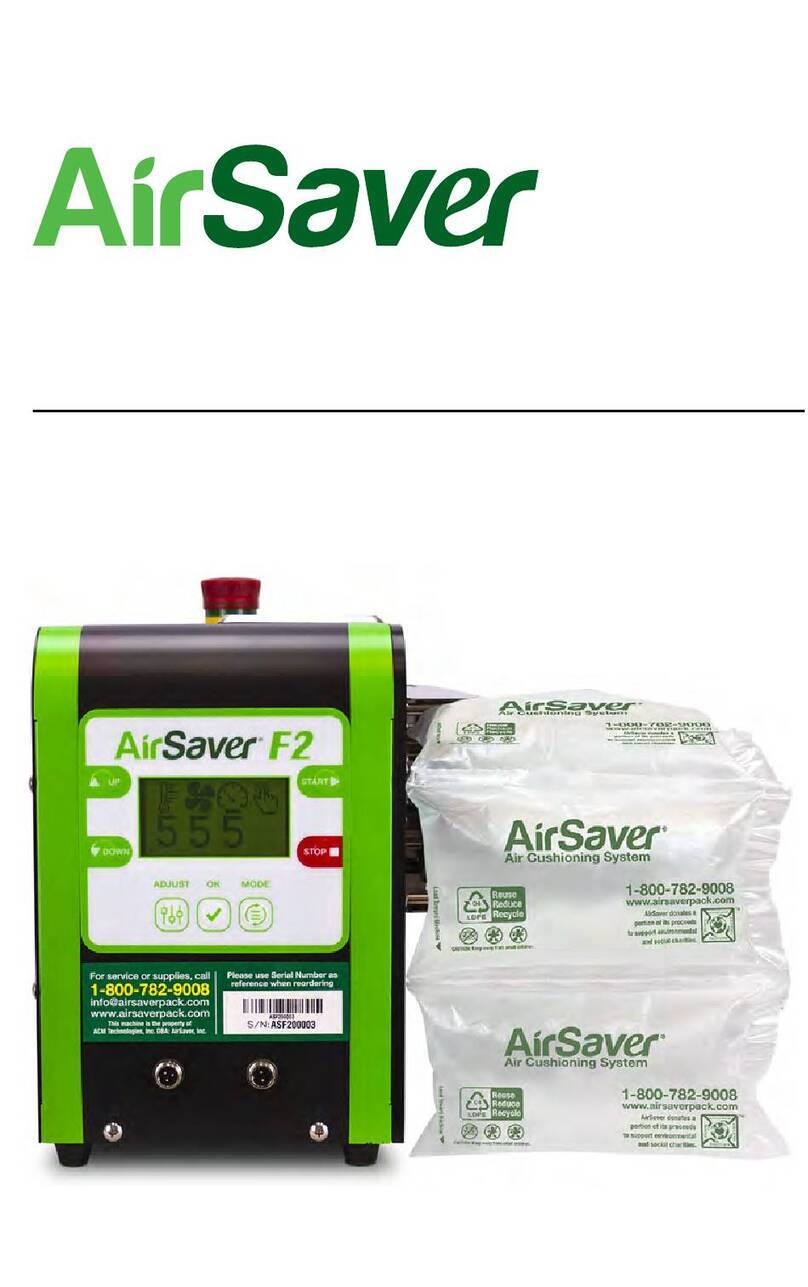
AirSaver
AirSaver F2 Safety instructions, setup & installation manual
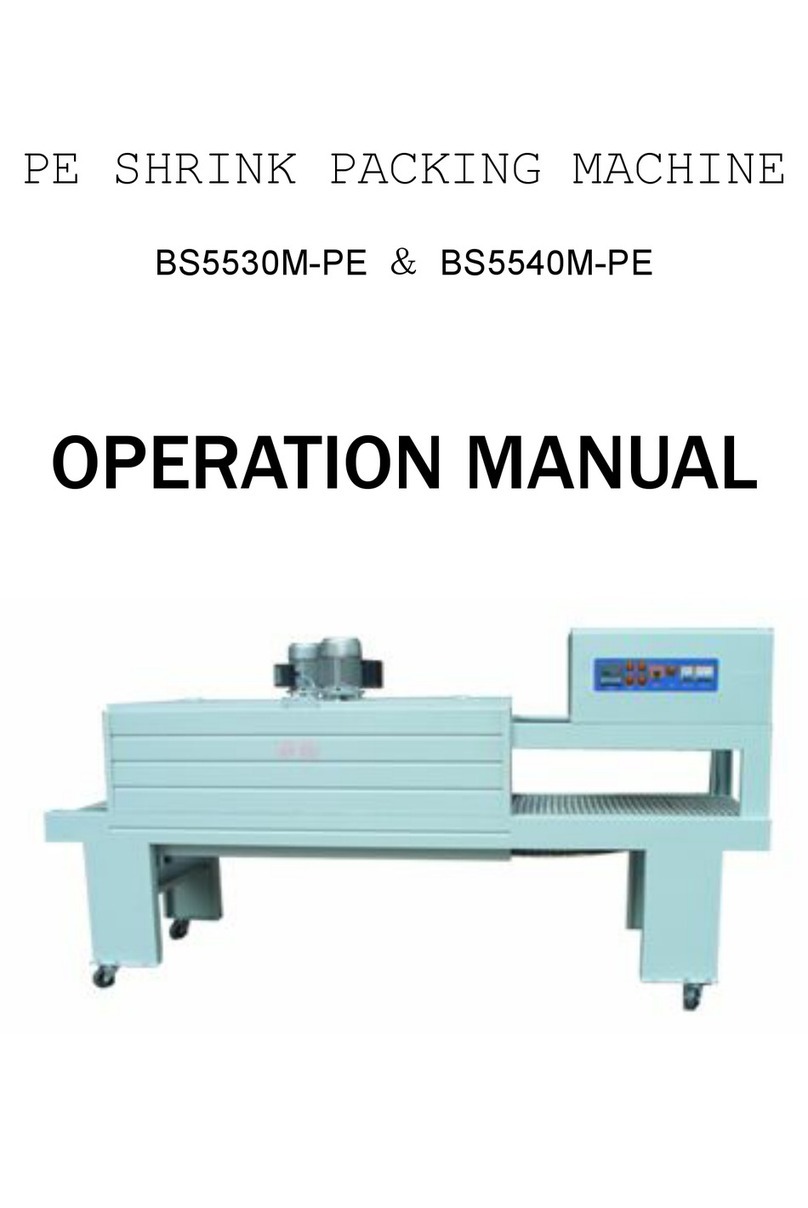
HUALIAN
HUALIAN M-PE Series Operation manual

Pro Pack Solutions
Pro Pack Solutions Eagle 710 Operation manual

Oliver
Oliver 1808-D User's operation

Kronos
Kronos H-46 Series Operation, safety and spare parts manual
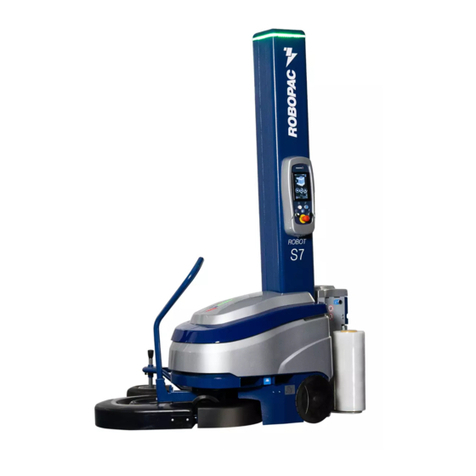
Robopac
Robopac ROBOT S7 Use and maintenance manual


